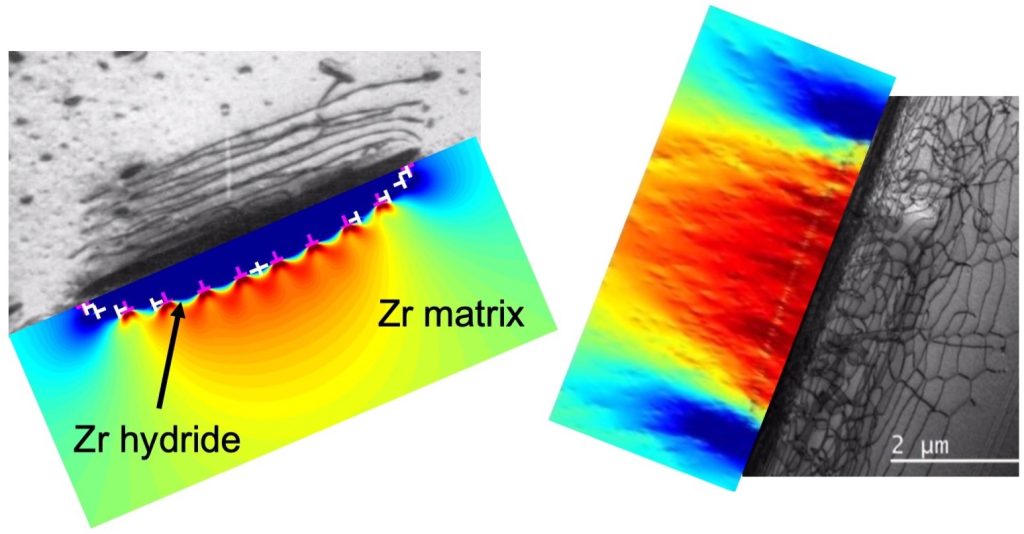Computer-simulated precipitation of zirconium hydrides in nuclear reactors

Nuclear fuel pellets are clad by thin zirconium tubes whose structural integrity is of paramount importance. The presence of the water coolant, however, provides hydrogen that reacts with zirconium to produce hydrides. Thermal cycles during normal reactor operations can lead to multiple precipitation-dissolution cycles. Hydrides are an undesirable phase whose embrittling potency depends, among other factors, on their morphology, size and precipitation site.
We simulated the precipitation of hydrides to show that they can plastically deform the surrounding zirconium matrix and study the features of this deformation. This turned out to be relevant because the crystal defects that propagate the plastic deformation – dislocations that are generated in the process – also originate a residual stress field that is attractive for the hydrogen that is dissolved in the cladding. This led us to believe that if the dissolution temperature is high enough to dissolve the hydrides but not to alter the dislocations that remain around them, re-precipitation at the same location is more likely to occur. In future developments, this work aims at improving existing models that predict cracking caused by hydrides, which is one of the most serious life-limiting factors for the cladding.
Authors: Luca Reali, Daniel S. Balint, Mark R.Wenman
https://www.sciencedirect.com/science/article/pii/S002250962200179X
